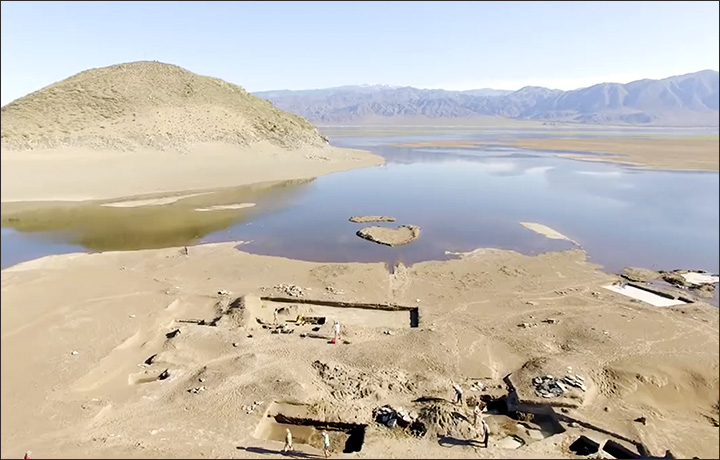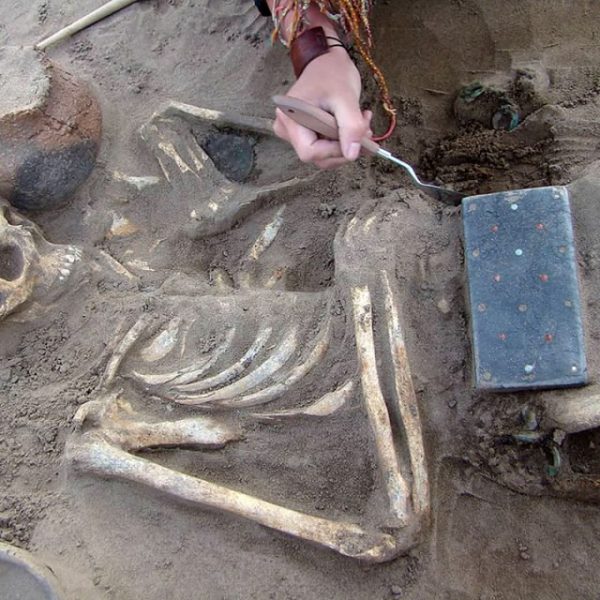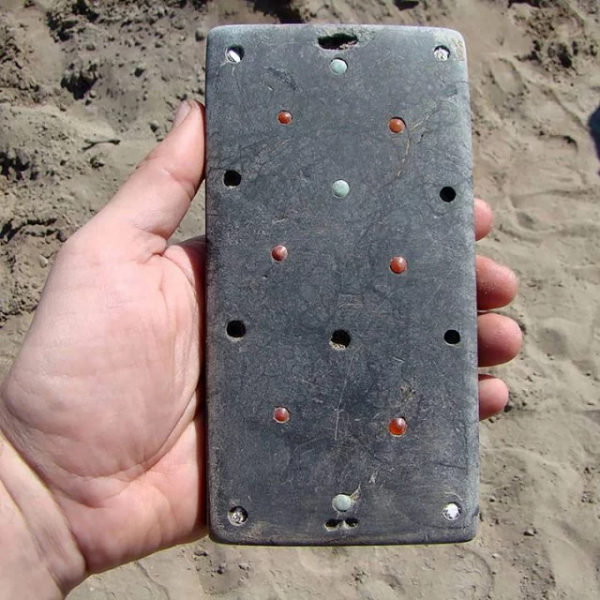Precious Archeological Ala-Tey Site Located at The Bottom of The So-Called Sayan Sea

The more recent discoveries are the Ala-Tey and Terezin burials. The problems archeologists are encountering include the fact that these cemeteries are underwater eleven months of the year.
In southern Siberia in the area of Tuva on the left bank of the Upper Yenisei river lie Xiongnu Age cemeteries from the second century B.C.
The Sayano–Shushenskaya hydroelectric power dam, constructed from 1963 to 1978, forms the Sayano–Shushenskaya reservoir which covers the sacred burials from about mid-June to the end of May causing archeologists to rush to find whatever they can before the treasures are lost forever.
According to siberiantimes.com, the leader of the Tuva Archeological Expedition, Dr. Marina Kilunovskaya of the St. Petersburg Institute of Material History Culture remarked, “We are incredibly lucky to have found these graves of rich Hun nomads that were not disturbed by robbers.
We discovered 110 burials at the Ala-Tey burial site, which is usually 15 meters underwater. Another site which was made at what is now the Sayan Sea shore is getting quickly destroyed by crumbling soil.
It is called Terezin, and there we found thirty two graves.” In 2018 a specific grave in Ala-Tey, number 29, gained attention because of the contents of the grave. Fortunately, a heavy rock sealed the grave and protected the young woman probably among the elite of society.

Kilunovskaya and Pavel Leus of the Russian Academy of Sciences have documented in their scientific paper, Archaeological discoveries in Tuva: excavations of the Ala-Teyand Terezin cemeteries of the Xiongnu period in 2015–2016 at exploration-eurasia.com that the woman was found wearing a beaded belt with a large, rectangle buckle similar in size to a cell phone fashioned from jet and inlaid with turquoise, coral and mother-of-pearl.

According to geology.com, jet is an organic rock created by degradation of wood. It was found lying across her pelvis suggesting it was the belt she was wearing when she was buried. Also discovered with her were belt buckles made of charcoal, turquoise and carnelian beads, an intricately carved wooden bag, a bag of pine nuts, an unusual red ware vase shaped pot with an H carved on it, copper alloy rings from the belt and two ceramic vessels.
AN AMAZING DISCOVERY: NOT JUST RUSSIA, BUT ALL OVER THE WORLD, HUMAN HISTORY HAS BEEN HIDDEN BY TIME AND MODERN CONSTRUCTION –> Race against time and waves as Russian archaeologists rescue Siberia’s remarkable Atlantis https://t.co/sEnu5twJ1P pic.twitter.com/gz5Hs0gFn9
— Cletus (@Cletus1942) June 25, 2019
Thirteen bronze cowries and a large stone plaque clasp with inlaid Chinese wu zhu coins from the Han dynasty were found along with earrings of bronze twisted from wire with a small loop where pendants may have hung and a round bronze mirror with a loop-shaped handle.
Other burials at the site produced beads made of antler, fish vertebra, argillite, gold, and bronze, late Han period Chinese mirrors and imitations made locally; a three bladed arrowhead, iron awls and knives.
Belts seem to have been important in Xiongnu culture as the numbers and varieties of belt buckles found buried in almost every grave are noteworthy.
There were openwork designs in bronze with various symbols and animals such as yaks, more jet buckles either studded with beads or carved with designs, natural cowry shells and bronze imitations, buckles made of bone, horns and stone. Belt rings of bronze, iron and stone with some done in ornate openwork and pendants were found made of deer teeth.
Project to recover and documents Bronze age and later graves flooded by a dam…
Race against time and waves as Russian archaeologists rescue Siberia’s remarkable Atlantis https://t.co/nDfd8HhgQM pic.twitter.com/wUTID72ii6
— doug moncur (@moncur_d) June 25, 2019
Each time the site floods the banks are eroded and more graves are destroyed which is why the Tuvan Archaeological Expedition from the Institute for the History of Material Culture RAS under the support of the Society for the Exploration of EurAsia in Switzerland has been excavating eroding burial sites of the Xiongnu.
Another Article From Us: Found in Permafrost: 2,300-Year-Old Cabin Rebuilt
They are finding the graves of the wealthy members of society are mostly among those being destroyed by the crumbling banks of the reservoir. The terrain and the weather can be ruthless especially when the cold storm winds whip through the Sayan canyon causing the team to lose precious work days.
